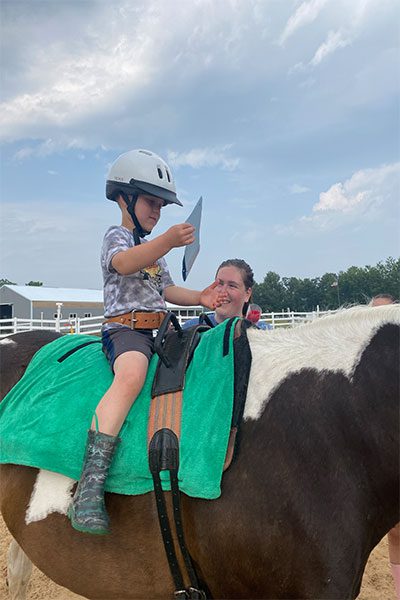
Nature’s Edge Therapy Center includes our Speech Pathologists trained in the advancement of Dynamic Temporal Tactile Cueing by Dr. Edythe Strand as well as PROMPT (Prompts for Restructuring Oral Muscular Phonetic Targets) and are listed on www.apraxia-kids.org
Speech therapy for childhood apraxia of speech (CAS) typically involves a multifaceted approach tailored to the individual needs of the child. Here’s an overview of how speech therapy typically works for CAS:
Assessment and Diagnosis: Before starting therapy, the speech-language pathologist (SLP) will conduct a comprehensive evaluation to assess the child’s speech and language abilities. This evaluation helps to determine the severity of CAS and identify specific areas of difficulty.
- Individualized Treatment Plan: Based on the assessment findings, the SLP will develop an individualized treatment plan. This plan will outline specific goals and objectives tailored to address the child’s unique needs and challenges.
Targeted Therapy Techniques: Speech therapy for CAS often includes a variety of targeted techniques aimed at improving speech production, coordination, and motor planning. Some common techniques used in therapy may include:
Prompts and Cues: The SLP may use visual, auditory, or tactile cues to help the child produce specific speech sounds or sequences of sounds.
-
- Motor Planning Activities: Therapy may include activities designed to improve motor planning skills, such as repetitive practice of speech movements or oral motor exercises.
- Articulation Therapy: Techniques focused on improving the clarity and accuracy of speech sounds may be employed, including sound drills and phonetic placement exercises.
- Multisensory Approaches: Some therapists use multisensory approaches that engage multiple senses (e.g., visual, auditory, tactile) to facilitate speech production and improve motor planning.
- Augmentative and Alternative Communication (AAC): In some cases, children with severe CAS may benefit from AAC systems, such as picture communication boards or speech-generating devices, to supplement or support their spoken communication.
- Repetition and Practice: Consistent practice is essential for improving speech production skills in children with CAS. Therapy sessions typically involve repetitive practice of target sounds, words, and phrases in various contexts to reinforce learning and promote generalization of skills.
- Parent/Caregiver Involvement: Parents and caregivers play a crucial role in supporting the child’s progress outside of therapy sessions. The SLP may provide guidance and training to help parents implement therapy techniques at home and integrate strategies into daily routines.
- Ongoing Monitoring and Adjustments: As the child progresses in therapy, the SLP will continuously monitor their speech and language development and make adjustments to the treatment plan as needed. Therapy goals may be modified based on the child’s response to intervention and any changes in their communication abilities over time.
Overall, speech therapy for childhood apraxia of speech is typically intensive, individualized, and focused on improving the child’s speech production skills, motor planning abilities, and overall communication effectiveness. Consistency, practice, and ongoing support are key elements in helping children with CAS make meaningful progress in their communication skills.

